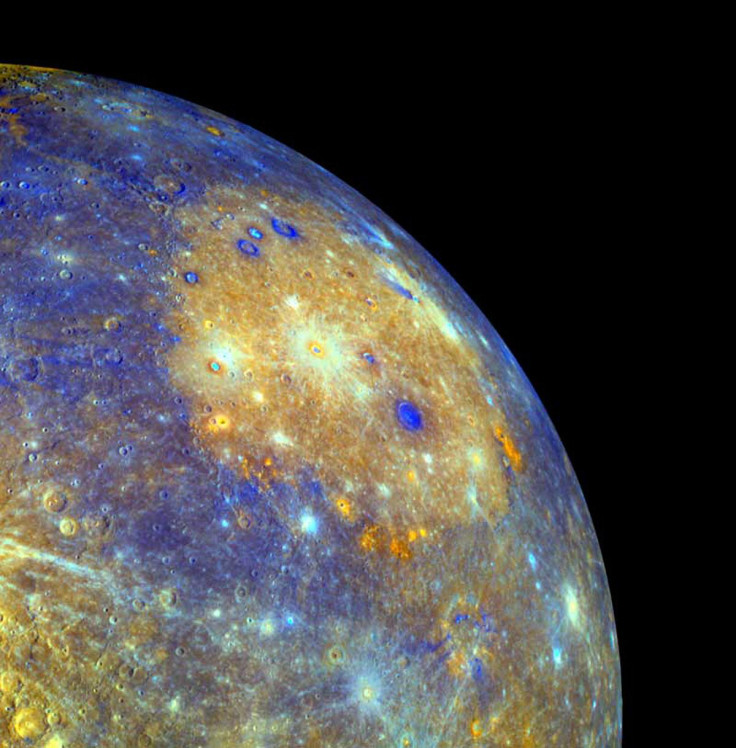Mercury's surface formed when volcanic activity spewed up materials from the core

Lab experiments have revealed that the chemistry of Mercury’s most ancient plains was likely forged near the planet’s core. NASA researchers said that Mercury’s surface feature originated from intense heating and crushing of rock 400 kilometres down, where the planet’s mantle meets the iron core. Volcanic activity spat up the rock that formed the oldest rocks found on Mercury’s surface.
The scientists recreated the material that resembled volcanic deposits on the planet’s surface. NASA’s MESSENGER (Mercury Surface, Space Environment, Geochemistry and Ranging) spacecraft’s mission to Mercury last year revealed its surface to be heterogeneous with a low iron content and alkaline surface. MESSENGER also recorded highest concentration of sulphur on any terrestrial planet in the solar system in its mantle.
The probe revealed two types of regions of Mercury. The older inter-crater plains and heavily cratered terrains were found to be around 4.2 billion years old, while the young northern volcanic plains were 3.7 to 3.8 billion years old. However, the scientists have no clue as to how different regions developed on the surface.
MIT geologists also studied part of planet Mercury’s cooling history right after it formed between 4.2 and 3.7 billion years ago and traced its origins to an enstatite chondrite, a rare meteorite. This kind of meteorite is extremely rare on Earth. The rare meteorite is now believed to represent Mercury’s building blocks.
“The key finding is that by varying pressure and temperature on only one type of composition, we could produce the variety of material found on the planet's surface. These findings indicate that the older terrains are formed by material melting at high pressures up to the core-mantle boundary, while the younger terrains are formed closer to the surface,” first author of the study, Dr Asmaa Boujibar, said at Goldschmidt conference in Yokohama, Japan.
Boujibar explained that the work would go a long way in helping experts “understand why we find such a variety of features” on Mercury.





















